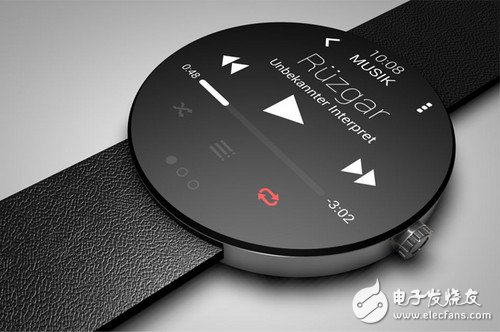Smart watch large-capacity battery is purely flicker?
Battery life can be said to be the biggest pain point of today's wearable devices. You may also point out other shortcomings, including slow applications, poor software performance, or overall lack of appeal. But these problems are likely to be solved, but battery life is not the case. A brief review of the products released at CES this year is not difficult to see, battery technology has made little progress. Under Armour's new bracelet can only provide five days of battery life, and Fossil's new smart bracelet Q Dreamer can only last for five days. The Jawbone or FItbit bracelet launched a few years ago already has such endurance. Misfit's new bracelet, Ray, can last for more than six months with three button batteries, but it just tied the level before Misfit Shine. The batteries used by Misfit have been used in traditional watches, calculators and hearing aids for many years. There are indeed some companies that are struggling to overcome the difficulties of battery technology and have gained media attention. Firbit claims that Blaze can achieve five days of battery life, which is impressive for a smart watch with a true display. Casio's upcoming Android Wear smart form will be able to last for one month. But don't be in a hurry - the reason why Fitbit can last for a long time is to sacrifice the built-in GPS and not run a large number of third-party applications; Casio watches can only last a month in the timer mode, if you want to play real The smart watch function can only last for one day. The new Moto 360 sports watch has built-in GPS and uses a hybrid display technology to maximize battery life. However, the Moto 360 and the Apple Watch without built-in GPS can only last one day. We even saw the keychain-sized Apple Watch external battery at CES. You might think that with the advancement of modern technology, Apple Watch will provide a better solution than external batteries. But this is not the case. Battery life is not only a pain point for wearable device users, but also for companies that produce these products because battery density does not maintain the same rate of progress as other technologies. Most wearable device manufacturers have not made advances in battery technology, but with processor and software technology to improve battery life. (When a smart watch doesn't have to be blacked out for a few seconds, are you confused? This is actually what the manufacturer intends.) Fitbit co-founder and CEO James Park said in an interview during CES that battery life is "the most difficult obstacle to overcome in technological advancement. I think the ionization density of lithium batteries will increase a little every year... but not expect Battery chemistry or battery technology is a huge leap." "The biggest advancement has always come from the processor market," Parker added. "Processors are improving every year, energy consumption has been decreasing, and sensors are the same. There are many advanced technologies in software." Andrew Chang, co-founder of wearable device developer Lumo Body Tech, who worked for the US Department of Energy, said that there have been some innovations in battery life, but the real challenge is cost, not technology. “Some batteries can be made very thin and the discharge rate is very low, but due to cost issues, we have not used it yet,†he said. Lumo's products can use lithium batteries for 5 to 7 days of battery life. Like Fitbit, the company is looking for other novel ways to improve battery life. "When we want to extend our endurance from 5 days to 10 days, I won't pay attention to the battery, but will focus on the chipset to run when you need it, and shut it down when you don't need it." Some companies may say, Wireless charging and fast charging technologies are all innovations in battery technology. For example, the UA Band can be fully charged in less than 30 minutes, while other wearable devices are also equipped with wireless charging devices. This is indeed more convenient than using a dedicated charger every night, but it is only a convenient charging process, battery life is still bad. There are rumors that a new generation of Apple Watch may be released this spring, and I personally hesitate between the two most desirable features: I want better battery life? Still want to have built-in GPS? Are these two functions completely opposite? Can Apple or other companies create miracles on battery life? Before breakthroughs in battery technology, wearable device manufacturers still rely on temporary workarounds, including battery backup, fast charging, and smart software. Perhaps more importantly, they must also prove that their wearable devices deserve to be put to the forefront of energy: although mobile phones have to be rushed every day, we all think it is worth making such sacrifices, but so far, no one has yet Wearables have this value.
iPhone 4S Battery 3.7V Li-ion with 500 cycle life time which is make from brandnew
cell and high quality protection board and FPC,all the raw materials is customerized. 0
cycle and iPhone 4S Battery life more than 500 times, rejection rate under 3‰. We are professional manufacturer on iPhone Battery.
iPhone 4S Battery Pack
Nominal voltage: 3.7V
Limited charge voltage: 4.2V
Capacity:1430mAh (5.3whr)
Cell size: 42x32x82mm
iPhone 4S Battery,iPhone battery,iPhone 4S Battery life,iPhone 4S Battery Pack Shenzhen Aokal Technology Co., Ltd. , https://www.aokals.com